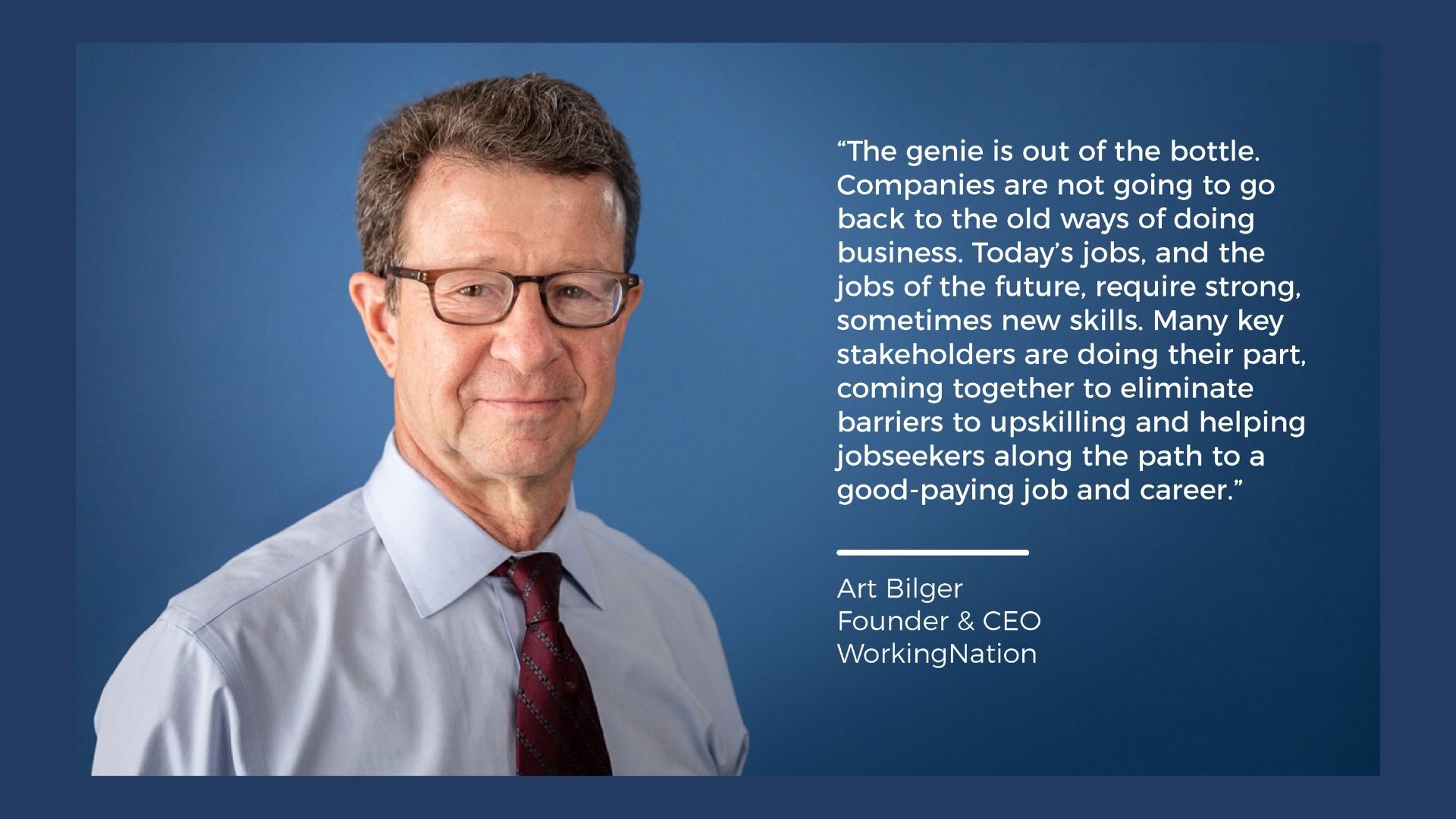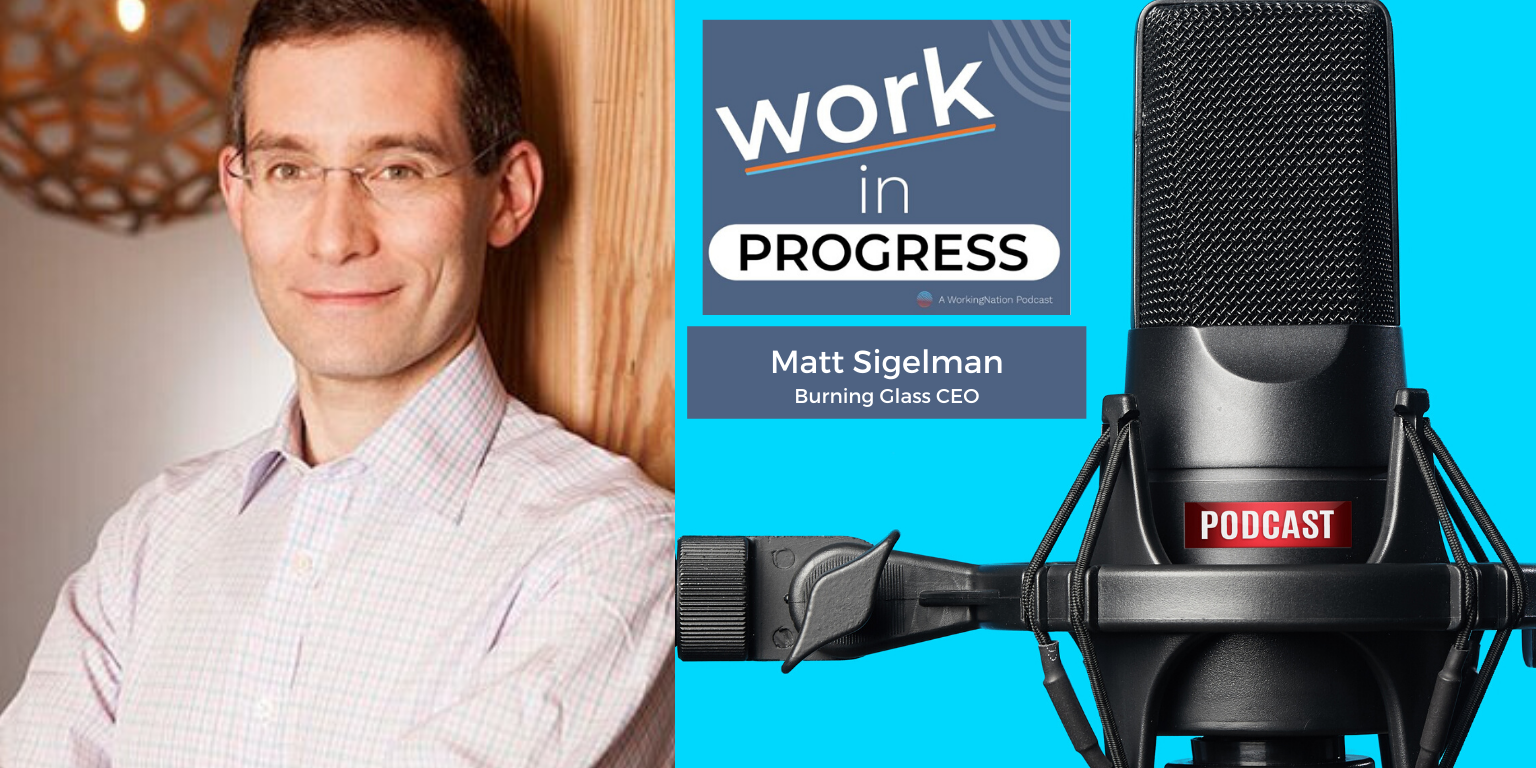
Over the last few years, I have been researching and writing a book called The End of Jobs: Rise of On-Demand Workers and Agile Corporations. I have studied the last three technological leaps forward that we have experienced in the world of work: mechanization, electrification, and computerization.
These advances in technology were so vast that they fundamentally altered the balance of power between companies and workers.
The balance of power tilted so heavily to companies that workers, and society as a whole, had to rebuild the social contract and find a new equilibrium. When we combine this with an analysis of the present state of the labor markets, we can see what trends and data have persisted through the last waves of innovations.
This is important as we stand at the precipice of a fourth great leap forward with the advancement of robots and AI.
Studying how companies, workers, and society responded to past transformations may give us insight as we plan for a wave of innovation that may well dwarf the previous three in not only size and scope but also speed. These changes won’t be developing over the next 50 to 100 years, but rather will change most of the world of work in the next 15 years.
The ongoing power shift
The history of work is defined by an undulating power balance between the buyers and sellers of labor — the balance of power in the relationship almost always sitting with the buyer of labor. As companies and factories developed during the First Industrial Revolution, the fundamentals of the working relationship also evolved as the balance of power shifted massively to companies. Public outcry against terrible working conditions grew and — combined with the union movement — power began to shift towards the workers at the start of the 20th century.
Regulation and the “social safety net” solidified a relative power balance between companies and workers and helped usher in a mythological era of the “lifetime employment contract.” I call it mythological because in fact, according to the data, its impact was faint.
Data shows the average length of time spent at a company has been relatively constant at five years since 1960. For some people and for some companies, the “lifetime employment contract” certainly did exist, and those workers marched to their gold watch and a pension plan. However, most workers never had access to that grand bargain. Lifetime employment did exist as a notion, an aspiration, and that notion existed for nearly two generations.
The myth of lifetime employment was broken by a confluence of three powerful factors: globalization, technology, and shareholder capitalism. An increasingly global economy meant a huge influx of workers, massively changing the supply and demand balance which tilted power back to companies. Technological changes were starting to bring automation to the factory floor, again tilting power back to companies. Shareholder capitalism saw companies pushed to deliver ever-higher returns and view their employees not as assets but as a cost to manage.
These forces killed the myth of lifetime employment and left workers in a very new world.
That new world — the world of work today — is defined by several powerful factors including the on-demand workforce, remote work, four generations in the same office, constant contact with your job, income inequality, and increased personal responsibility. The modern workforce is more task-based, is more fluid and dynamic, and more interconnected than ever before.
The modern workforce is driven more and more by data, as decisions are increasingly left to algorithms crunching data on past performance, skills, and availability. This understanding of where we are now is key as the shape of the future of work can be seen in what innovative and agile companies are doing today.
Once we have a basis in the past and an understanding of the present, we can tie together the threads that run through the labor dynamic and make some thoughtful predictions about the near-term future. There are two conclusions we can draw about the world of work in the next five to ten years: convergence and total talent management.
Convergence means that all workers will be on-demand. Not in the sense that everyone will be an Uber driver, but more of the reality that all the tensions felt by today’s on-demand worker will be felt by all workers soon. The trials of the on-demand worker from total personal responsibility (not only for building and marketing your skills, but also for your healthcare and retirement), task-based labor, data collected on every interaction, and algorithms allocating work are ALL permeating the world of full-time employees.
The idea that you have one manager is being replaced by the reality that you work on several teams. Broad functions are being replaced with their component tasks. Workers’ engagement with companies is becoming more fluid, in the day-to-day process, but also in the engagement. This is the rise of the on-demand worker. This is the end of jobs.
Changing the world of work
Total Talent Management combines the powerful trends of today’s world of work, including platforms, workflow in HR, AI in the workplace, and the need to win the war for talent and create a flexible cost structure. The world of HR systems is evolving to include the tying together of all labor classes into a single system that houses all of a company’s labor resources: full-time employees, part-time employees, temp employees, freelancers, alumni, robots, anyone that can perform a task.
Work is being atomized into tasks and allocated by an AI engine against all labor assets so agile teams tackle the work. Companies work with people in a more fluid construct: sometimes as an FTE, sometimes as a consultant, eventually as part of their retiree talent pool. This allows companies to know their labor assets and engage workers in real-time when economic needs arise. This is the future of work and it is the rise of an agile corporation.
The more distant future, of course, involves The Robots and AI, as the fourth step function becomes a standard part of our lives. History teaches us that every past technological step function was accompanied by doomsayers predicting the end of jobs, and this time is no different.
Reports by trusted institutions are passed on social media and misunderstood — 50 percent of jobs will be gone in 20 years! History tells us that these predictions of doom are never right. However, The Robotics and AI impact will be vast and will happen much quicker than other changes.
The robotics and AI era
As with other changes, there will be an impact as The Robotics and AI will vastly reduce the costs of production. This will result in jobs in repetitive, high-scale processes being eliminated, as they were in the past. The decreased cost and increased application of robots mean the changes will occur not only in manufacturing but in service industries and in the home.
The most intelligent estimates I have seen see 10–15 percent of jobs will be lost in industries with repetitive high-scale processes like transportation, accounting, legal, and food preparation. However, this is always coupled with a 10–15 percent increase in jobs in industries that are either new (robotics, data processing, AI) or industries that require human interaction or creativity (customer success, marketing, and social media).
This should lead to a society with ever more goods and services, produced ever cheaper, requiring us to work fewer hours, and achieve an ever-increasing standard of living.
However, history teaches us that society does not deal with these types of changes well.
While the past three changes did lead to more jobs, a rising standard of living, and a massively better society, these were achieved only after tremendous turmoil. The last changes led to economic shocks and a fundamental restructuring of society — think the New Deal — in order to compensate and ensure a balance of power. This time may be no different and things like a Universal Basic Income, or other seemingly radical proposals, could become part of the new bargain society strikes.
In studying the past and present we learn a lot, but there is much more we don’t know about how The Robots and AI will impact our world. We will have to wait and see our lawmakers, corporate leaders, union bosses and civil society leaders’ actions and reactions (or inactions) as change sweeps the workforce.
What the future workforce will look like
But we also know that we can ask the smartest people in the world of work their thoughts of what the workforce will look like in 2040 and thus get a more complete picture. In my book, I do just that. The 20 greatest minds from labor, lawmakers and corporate leaders to union bosses and civil society leaders each write a few pages in The End of Jobs and share their vision of the future. (They will compete for the $10 million Future of Work Prize. Whoever’s description of work is most accurate in 2040 will win it all.)
While I am convinced of convergence and total talent management leading to the end of jobs and the rise of on-demand workers and agile corporations, I can only see faint traces of how The Robots and AI will impact the world.
I do know though that, as with the last three-step functions, workers, companies, and society will have to come together and decide on a new equilibrium. These changes will impact how we all work and live and we get a say in that.
We get to decide what kind of society we want. We get to decide how we educate workers and reeducate those impacted by change. We get to choose how we help those communities most impacted by change. We get to decide how evenly distributed societies’ wealth is.
Pay attention and make your voice heard, because the world of work is changing and the rest of society will have to change as well.
Jeff Wald is the Founder of WorkMarket, which was bought in January 2018 by ADP. Follow him on Twitter @JeffreyWald.











